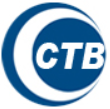About Us
Brief History of The Chamber of Thrift Banks
The umbrella organization of the country’s thrift banks was organized in 1974 as the Chamber of Savings and Development Banks, and was then composed of 10 savings banks, 28 private development banks and 44 savings and loan associations. It was organized primarily “to provide an institutional medium through which the members can collectively assist and cooperate with one another, with other members of the banking sector, and with the National Government and its instrumentalities, more particularly the Central Bank of the Philippines (now known as the Banko Sentral ng Pilipinas) to promote, develop, expand and strengthen the role of savings and loan associations, private development banks and savings and mortgage banks (otherwise known as thrift institutions), in the accumulation of savings, enhancement of trade, commerce, industry and agriculture, and in the economic development of the county.”
Through the years, the Chamber went through changes, difficulties and successes. Through their struggle, amendments to the statutes governing the thrift banks were enacted (through the Thrift Banks act of 1995) broadening their powers and further enhancing their role in the mobilization of small scale deposits and extension of credit resources to individuals and SMEs (particularly in the countryside) and in the provision of housing and consumer loans.
On November 20,1996 the Chamber was officially registered with the SEC as the Chamber of Thrift Banks (CTB).
Realizing the economics and strength of having one entity to speak for the sector and seeing the need to truly unite, this erstwhile loose aggrupation of savings banks, private development banks and savings and loan associations formally consolidated into an integrated Chamber of Thrift Banks on September 4, 1998. The individual associations were thus collapsed, and member-banks were to be known as simply thrift banks.
Amendments to the CTB’s By Laws and Articles of Incorporation were filed with the SEC on December 3, 1998, reflecting the agreements reached by the general membership on the integration.
The integrated Chamber of Thrift Banks has proven its effectiveness as professional association by the policies it has been able to translate into concrete action and programs it has managed to put in place.
The CTB continues to pursue its mandate of coordinating the efforts of its member thrift banks as they contribute to the country’s economic development by servicing the needs of the household, both in gathering and lending of funds, and in providing medium and long term credit to Philippines micro, small and medium enterprises (MSMEs) and housing. It supports its members by ensuring that its various concerns are brought to the attention of the right government institutions or regulating body, particularly the Banko Sentral ng Pilipinas (BSP). Through active advocacy of appropriate legislation and regulations and establishing positive and mutually respectful working relationships with Congress and the industry regulators, particularly the BSP, the CTB helps ensure a manageable (if not better) operating environment for thrift banks, and has been at the forefront of advocating appropriate legislative and regulatory reforms, thereby influencing the statutory and regulatory framework. The CTB also provides training programs that enhance its members’ skills and qualifications and rallies its members to raise industry professional standards by setting standards of conduct including the adoption of a Code of Ethics and manualized compliance and risk guidelines.
One of the more regular activities of the CTB is its series of annual conventions, the themes of which more than reflect the growth of thrift banking in the country as a significant monetary sector, as well as in harnessing the savings potential among the people to raise the required investment inputs for the country’s accelerating economic development. Through the years, the CTB’s conventions have been an excellent forum for a healthy exchange of ideas designed not only to promote the well- being of the thrift banking sector but also to see avenues toward contributing to the country’s social and economic goals.




































